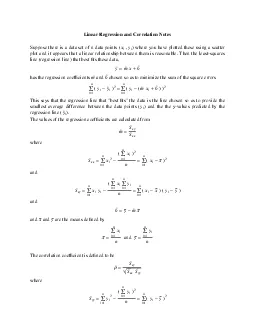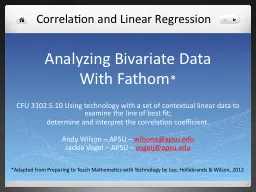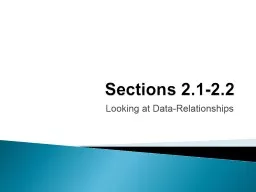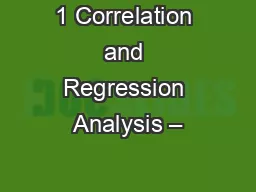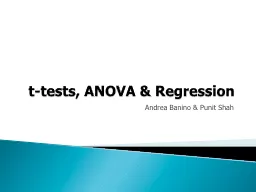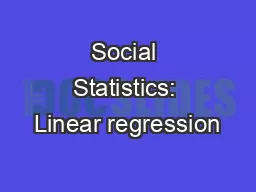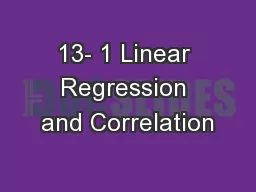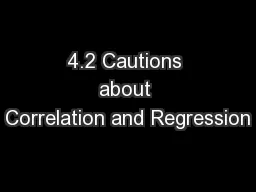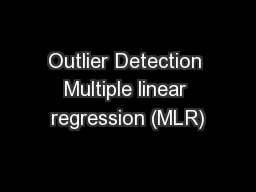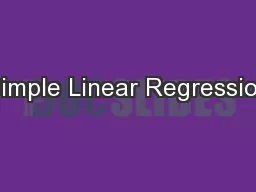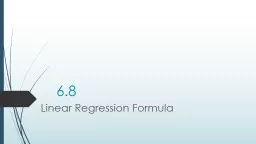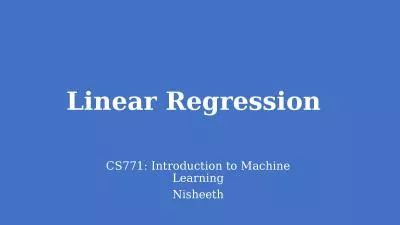PDF-Linear Regression and Correlation NotesSuppose there is a data set of
Author : ceila | Published Date : 2021-08-19
2Note that1r1otal Sum of Squares TSS of the data set asTSSni1Syiy2note thatTSSSyygression SSR asRSSni1Syiy2and note that sinceyiwill not be exactly on the regression
Presentation Embed Code
Download Presentation
Download Presentation The PPT/PDF document "Linear Regression and Correlation NotesS..." is the property of its rightful owner. Permission is granted to download and print the materials on this website for personal, non-commercial use only, and to display it on your personal computer provided you do not modify the materials and that you retain all copyright notices contained in the materials. By downloading content from our website, you accept the terms of this agreement.
Linear Regression and Correlation NotesSuppose there is a data set of: Transcript
Download Rules Of Document
"Linear Regression and Correlation NotesSuppose there is a data set of"The content belongs to its owner. You may download and print it for personal use, without modification, and keep all copyright notices. By downloading, you agree to these terms.
Related Documents

